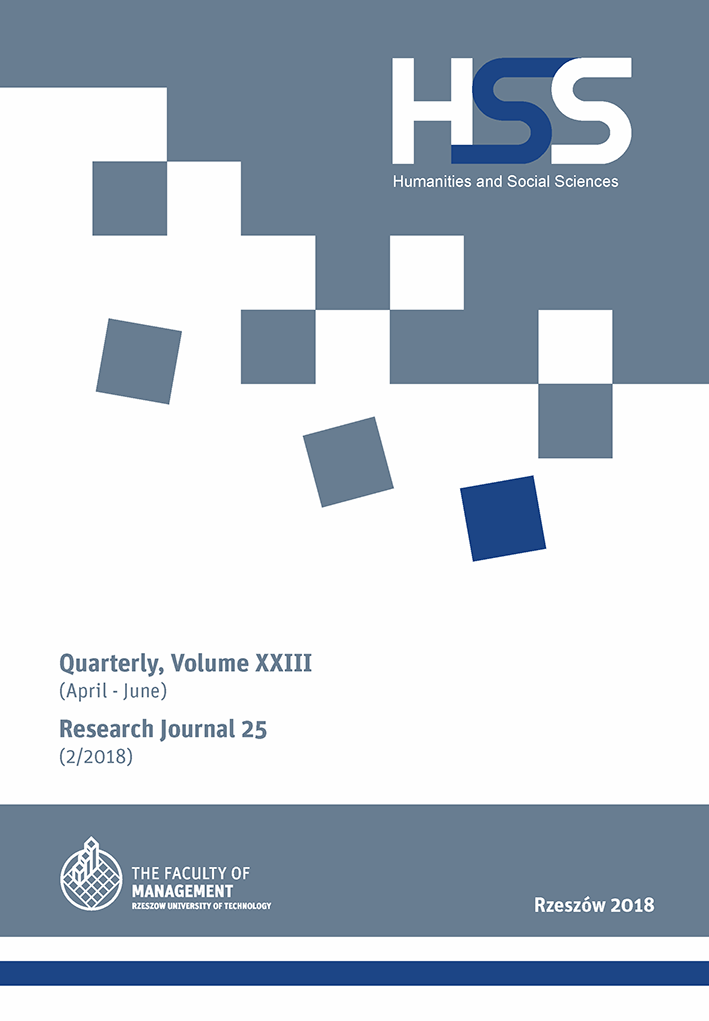Abstrakt
Identification of the factors that shape the effectiveness of innovation activities is important for promoting regional development. The paper aims at evaluation of determinants of innovation performance in the European regions. In order to investigate this issue we apply a fixed effects regression model on a 5-year longitudinal dataset of 190 European regions. We explore four groups of determinants of innovation performance: technological innovation capital, non-technological innovation capital, human capital and network capital of regions. In order to assess regional innovation performance we use a variable measuring the relative ability of firms to generate revenues from sales of product or process innovations. The results of analysis indicate that all examined forms of regional innovation capital exert positive and statistically significant impact on innovation performance, except human capital for which our evidence seems ambiguous. The strongest impact on the relative ability to generate revenues from sales of innovations seems to be exerted by the technological innovation capital (measured by intensity of public sector R&D expenditures), closely followed by non-technological innovation capital (measured by the non-R&D innovation expenditures in firms). Our results also demonstrate a somewhat weaker, positive influence of collaboration on innovative activities (used as a proxy of network capital) on the aforementioned firms’ revenues. Surprisingly, human capital (measured by the share of population aged 25-64 with tertiary education attainment) turned out to have positive but statistically insignificant impact on innovation performance.
Bibliografia
Badiola A., Casares-Hontañón P., Coto-Millán P., Ángel Pesquera M., Networks and Innovation: An Economic Model for European Regions (2002–2006), “Journal of Knowledge Management, Economics and Information Technology”, Vol. 2, Issue 5, 2012.
Basile R., Capello R., Caragliu A., Technological interdependence and regional growth in Europe: proximity and synergy in knowledge spillovers, “Papers in Regional Science”, Vol. 91, 2012.
Boschma R., Proximity and Innovation: A Critical Assessment, “Regional Studies”, Vol. 39, Issue. 1, 2005.
Capello R., Faggian A., Collective Learning and Relational Capital in Local Innovation Processes, “Regional Studies”, Vol. 39, Issue 1, 2005.
De Noni I., Ganzaroli A., Orsi L., The impact of intra- and inter-regional knowledge collaboration and technological variety on the knowledge productivity of European regions, “Technological Forecasting and Social Change”, Vol. 117, 2017.
De Noni I., Orsi L., Belussi F., The role of collaborative networks in supporting the innovation performances of lagging-behind European regions, “Research Policy”, Vol. 47, Issue 1, 2018.
Feldman M.P., Florida R., The Geographic Sources of Innovation: Technological Infrastructure and Product Innovation in the United States, “Annals of the Association of American Geographers”, Vol. 84, No 2, 1994.
Fritsch M., Franke G., Innovation, regional knowledge spillovers and R&D cooperation, “Research Policy”, Vol. 33, 2004.
Greene W.H., Econometric analysis. 6th ed., Prentice Upper Saddle River, N.J. Hall, 2008.
Hollanders H., Es-Sadki N., Kanerva M., Regional Innovation Scoreboard 2016. Methodology report, European Commission, Ref. Ares(2016)3414626 – 14/07/2016.
Huang C., Arundel A., Hollanders H., How firms innovate: R&D, non-R&D, and technology adoption, UNU-MERIT Working Papers No. 027 ISSN 1871-9872, 2010.
Kijek T., Matras-Bolibok A., Rycaj E., Do Public R&D Expenditures Foster Business R&D Investments? “International Journal of Synergy and Research”, Vol. 5, 2016.
Landry R., Amara N., Lamari M., Does social capital determine innovation? To what extent? “Technological Forecasting and Social Change”, Vol. 69, Issue 7, 2002.
Lee S.Y., Florida R., Gates G., Innovation, Human Capital, and Creativity, “International Review of Public Administration”, Vol. 14, Issue 3, 2010.
Mankiw N.G., Romer D., Weil D.N., A Contribution to the Empirics of Economic Growth, “The Quarterly Journal of Economics”, Vol. 107, No. 2, 1992.
Matras-Bolibok A., Does firm’s size impact innovative performance?, “International Journal of Innovation and Learning”, Vol. 4, No 15, 2014.
Nelson R.R., Phelps E.S., Investment in humans, technological diffusion, and economic growth, “The American Economic Review”, Vol. 56, No. 1/2, 1966.
Romer P., Endogenous Technological Change, “Journal of Political Economy”, Vol. 98, No. 5, 1990.
Savrula M., Incekara A., The Effect of R&D Intensity on Innovation Performance: A Country Level Evaluation Procedia - Social and Behavioral Sciences 210, 2015.
Sun X., Li H., Ghosal V., Firm-Level Human Capital and Innovation: Evidence from China, CESifo Working Paper Series No. 6370, 2017.

